|
240Z (S30) (1969)
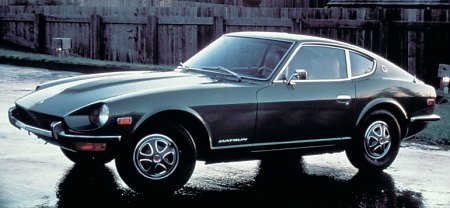 Since WWII, the global
sports car market had been dominating by British manufacturers for 20
years. They shifted tens of thousands of MG, Triumph, Healey and Jaguar
every year to the world's largest sportscar market, the USA. By the
mid-1960s, their domination was being challenged by Alfa Romeo and
Fiat. However, the worst nightmare did not come from Italy but the
place where sun rises – Japan. The 1960s was a fruitful decade to
Japanese car manufacturers. Their cheap econo cars were proved popular
in USA and production skyrocketed during the decade. Now they started
pursuing a higher degree of respect from the West. To that end, what
could be better than building a world-class sports car? The first to
accomplish that mission was the 1969 Nissan Fairlady Z, which was known
as Datsun 240Z overseas.
The birth of 240Z was driven by Yutaka Katayama, the boss of Nissan USA then and now known as "the father of Z-cars". In 1965, he visited the R&D department in Japan HQ, persuading the chief engineer and designer to develop a stunning sports car instead of continuing making cheap economy cars forever. His words moved them and, having committed to the top management that he could sell 3000 cars a month in America, the project got greenlight with project code "Z". 4 years later, the production car went on sale. It was called "Fairlady Z" at its home market following the tradition of Nissan sports cars (note: Nissan had been building the unremarkable Fairlady roadster series since 1959). But Mr. K preferred a stronger name for export market and called it 240Z instead, where the number represented its engine displacement. 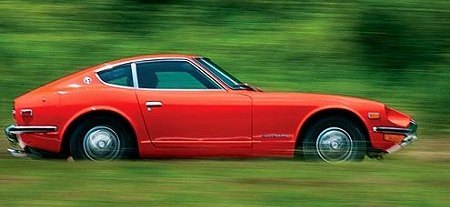 The original Z-car was beautiful. Its styling was probably
influenced by an earlier study prototype penned by Albrecht Goertz, who
was renowned for BMW 507 and
then had a short stint at Nissan until 1964 – and that led to the
speculation that it was designed by Goertz. However, the car was
equally inspired by the contemporary Ferraris (see that 250GTO
proportion?) and Jaguar E-type, as well as perhaps Toyota 2000GT.
Anyway, it was by no means a copycat. Nissan studio should be proud
that they created a car that looked not only original but far more
modern than its nearest rivals MG, Triumph and Fiat, and would be
compared to the more expensive Jaguar and Porsche.
The upmarket look was supported with modern technologies, such as all-independent suspensions by means of MacPherson struts up front and Chapman struts at the back, front disc brakes, 5-speed gearbox (on Japanese and European cars at least) and an SOHC straight-six engine producing 151 gross horsepower. It was capable of 0-60 mph in 8 seconds or so, and reaching a top speed of 125 mph, both by far exceeding the level of MGB, Triumph TR6, Alfa Romeo Duetto/Spider and Fiat 124 Spider/Coupe. The 240Z was praised by road testers for not only good performance but also good handling and roadholding. Its rack-and-pinion steering was quick, accurate and feelsome, if quite heavy. Its low-speed ride was rather firm, but things improved markedly at speed. Its chassis balance was benefited by a near 50:50 weight distribution. The six-cylinder engine was much smoother and quieter than its four-cylinder counterparts at cruising speed. All these made it a fun drive as well as an easy-going companion. 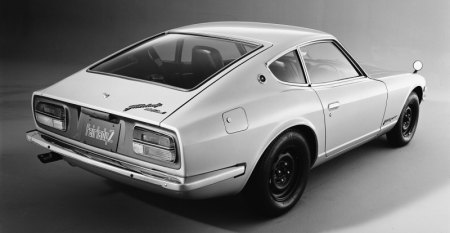 Such a combination of performance, sophistication and beauty
was unheard in the affordable sportscar market. No wonder the 240Z was
immediately a hit in the USA. From 1969 to 1978, the first generation
Z-car sold 550,000 copies worldwide, with 80,000 units of them in Japan
and the vast majority of the rest bought by American motorists. Its US
sales reached as high as 70,000 units a year, becoming a miracle for
Japanese export. Such success ultimately led to the extinction of MG,
Triumph and the sports car line of Fiat.
Unlike 240Z, the domestic version Fairlady Z was powered by a 2-liter 130 hp version straight-six to avoid heavy taxation. Nissan also built a handful of high-performance model Z 432. It employed a 160 hp 2-liter twin-cam 24-valve straight-six taken directly from Skyline GT-R. Its name implied the use of 4 valves per cylinder, 3 carburetors and 2 camshafts. Nevertheless, extreme cost limited its production to only 420 units. In the US market, the original 2.4-liter engine was enlarged to 2.6-liter in 1974 and 2.8-liter in 1975 to offset the negative effects of tightening emission and safety requirements. The resultant cars became 260Z and 280Z. 1971 introduced 3-speed automatic transmission as an option. 1974 saw the addition of 2+2 model, which had a longer wheelbase and a less streamline fastback to accommodate a pair of occasional rear seats. These variants widened its customer portfolio and increased sales, though making the car less sportier than originally conceived. The first generation S30 was so popular that its successors would never match it. 280ZX (S130) (1978)
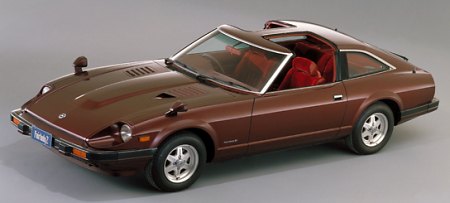 280ZX was a common sight in
my childhood, but it had never caught my heart. Neither did it impress
motoring journalists of its days. The car had two problems: firstly, it
did not look as beautiful as the original 240Z. It was made longer and
slimmer to the extent that as ill-proportioned as Kate Moss.
Furthermore, its
chromed B-pillars and T-bar roof (for which most buyers opted) added a
sense of flamboyance to the dislike of purists.
The second problem concerned its change of development direction. While the original 240Z was a pure sports car, the 280ZX became a luxury GT. It had more interior space (especially in the more popular 2+2 body), better noise insulation, more luxury equipment and multi-adjustable seats. It was unquestionably more comfortable and refined to travel for long distance. Unfortunately, that also resulted in more weight. As the 2.8-liter straight-six was practically the same as that on the last 280Z, producing the same 135 net horsepower, performance suffered a slight setback. By the time of late 1970s, few people would get excited with a 0-60 mph time of 9 seconds. Later cars got turbocharging to boost output to 180 hp, but that was too late to save its reputation. 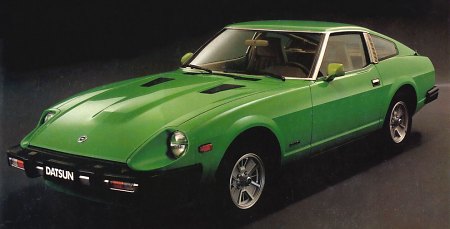 Its driving dynamics also suffered from cost savings. The
280ZX shared a number of vital components with the contemporary Nissan
Bluebird, most notably its semi-trailing arm rear suspensions and
recirculating-ball power steering. They were part of the reasons for
its
mediocre handling. While roadholding and resistance to body roll seemed
good, the car was hampered by a soft ride, more understeer and a less
forgiving behavior at the limit. Its power steering delivered less feel
yet it was quick and light to the extent of nervous, especially when
subjected to bumps. The now outdated straight-six spun smoothly and
quietly below 4000 rpm, but its noise got intrusive afterwards and
would be eventually reluctant to spin to redline. Moreover, the
gearshift was stiff and obstructive, thus the car was enjoyable to
drive only on open roads.
Rising yen meant the 280ZX was no longer a bargain as the 240Z used to be, but still it offered more content and luxury than a Porsche 924 or a Corvette. A great car it might not be, the 280ZX knew how to catch the hearts of American public with its flamboyant style and luxury features. That's why its production continued rising, peaking at 105,000 units in 1979. That was also to be the all-time high for the Fairlady series. 300ZX (Z31) (1983)
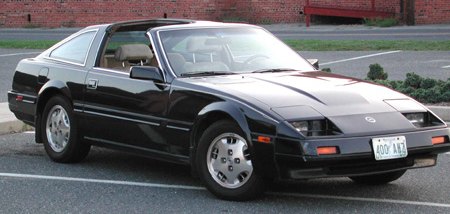 When 300ZX Turbo was
launched in 1983, Nissan claimed it had a top speed of 250 km/h (155
mph). Although this was proved to be wide off the mark later on by
European road
testers, its true potential of 143 mph
(230 km/h) still earned it the title of the fastest production car in
Japan.
The 300ZX continued the luxury GT route of 280ZX, but it improved markedly in styling and engine. Its new body shell was shaped much sharper and more up to date, with a fast-angle bonnet, flush windows and clean lines to mark a big progress from the 1970s. It was also very slippery, with a drag coefficient of only 0.31, down from the previous 0.39. The stylish semi-pop-up headlights were its signatures. Not so great were the two-tone color scheme and pseudo intake on the bonnet. They might please boy racers, but did not suit the role of luxury GT. Fortunately later cars had them discarded. Both 2-seater and 2+2 bodies were available again – the latter ran an extended wheelbase to accommodate rear passengers. By the standard of 2+2, its rear seats were rather spacious, allowing average adults to take short journeys as long as the front occupants were willing to compromise. As expected, the new luxury GT got even better equipped, better built and a little more spacious inside. It still had its sight set firmly on the US market. 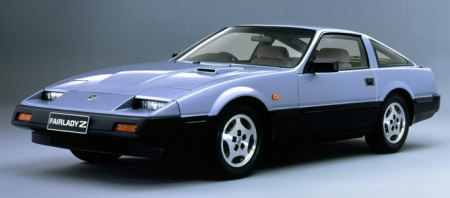 Having abandoned the
long-serving straight-six, the 300ZX employed a new VG30ET turbocharged
3.0-liter V6. It offered 230 horsepower and 242 pound-foot of torque
(American version offered 200 hp), more than anything at its
price range. Its single overhead camshaft and 2 valves per cylinder
were not particularly advanced, ditto the lack of intercooler, but at
least it got electronic ignition and fuel injection. The engine ran a
low boost pressure of 0.5 bar and a low, 7.3:1 compression ratio.
That's why in real-world driving its off-boost punch was rather weak.
It also lacked an explosive mid-range that characterized many turbo
engines
of the time (e.g. Mitsubishi Starion), but on the plus side its power
delivery was more linear and easier to manage. That said, the V6 was
not
very willing to rev towards 6000 rpm.
Though it was better looking and much faster than 280ZX, European road testers were not very impressed with the 300ZX. Its American-biased softness and bulkiness failed to inspire the driver like Porsche 944 or Lotus Excel. Its controls succeeded many flaws of 280ZX, such as a numb power steering (despite of the switch to rack-and-pinion type) and a ponderous gearchange. However, the tricky at-the-limit handling of its predecessor was corrected, at least on dry roads. The use of adjustable dampers gave the driver a choice of soft, normal and hard ride settings, although none quite hit the sweet spot. 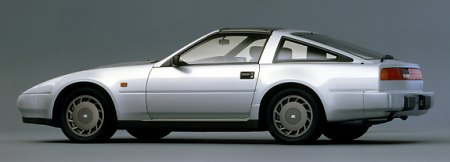 The 300ZX no longer enjoyed an easy life like its
predecessors as more Japanese rivals joined the battleground, such as
the aforementioned Mitsubishi Starion (1982), the second generation
Mazda RX-7 (1985) and Toyota Supra turbo (1987). The 1982 Pontiac
Firebird and Chevrolet Camaro twins were stronger oppositions than
ever, ditto the new Corvette C4. That meant the Fairlady had to
introduce updates more frequently. In Japan, a cheaper model called
200ZR joined the range with new RB20DET engine – an advanced
2-liter 24-valve straight-six turbo good for 180 hp. In late 1986, the
whole range received a mid-life facelift (pictured above) that saw all
its sharp edges and wheel arches smoothened and its taillights
modernized. Meanwhile, new model 300ZR introduced a 24-valve
naturally-aspirated VG30DE engine with 190 hp. It helped relieving the
pressure on 300ZX turbo, whose output had
been reduced to 195 hp in the domestic market due to tightening
emission. Nevertheless, by now the Fairlady had lost the
title of the fastest Japanese car to Toyota Supra Turbo. A full
makeover was desperately
needed...
300ZX (Z32) (1989)
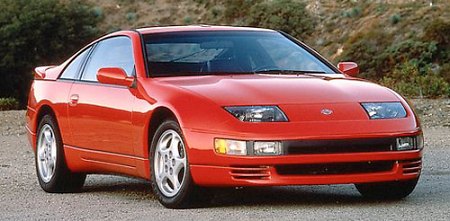 1989 was a busy and
fruitful year to the Japanese motor industry as it launched a trio of
landmark performance cars – Mazda MX-5, Nissan Skyline GT-R and 300ZX
(codenamed Z32). Although the fourth generation Z-car might not
match the other two for historical significance, it would be remembered
as one of the most beautiful cars Japan had ever designed as well as
the first ever Japanese GT that punched Porsche to the very boxing
corner. More so than the original 240Z, it shocked the European sports
car industry and changed the perception of sports car buyers all over
the world.
No matter in styling, perceived build quality, technology or performance, the Z32 300ZX was a quantum leap from its predecessor as well as the contemporary standards of production sports cars / grand tourers. Its new design was truly groundbreaking, being artistic, futuristic and impeccable. Its tightly fitted body panels and glass delivered the highest perceived build quality not even Zuffenhausen could manage. Its all-multi-link suspensions, electronic damping and computer-controlled Super HICAS 4-wheel steering system made the contemporary Porsche 944 looked terribly outdated. Best of all, its VG30DETT 3-liter V6 got high-tech ingredients like quad-cam 24 valves, intake variable valve timing and a pair of low-inertia Garrett T25 turbochargers to produce massive output – 300 horsepower at 6400 rpm and 283 lbft of torque at 3600 rpm. It sprinted from rest to 60 mph in just over 5 seconds, reaching the electronic regulated top speed of 155 mph effortlessly. Good enough to scare a 944 Turbo. What's more, it cost a great deal less to buy. Porsche should be really worried... 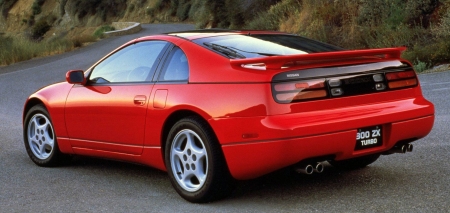 The non-turbo version wasn't slow either. Its 222 hp output
nearly matched the old 300ZX turbo. It was capable to complete 0-60 mph
sprint in 7 seconds and flat out at 148 mph. In other words, the same
performance as 944 S2. That was quite an achievement considering the
Nissan was larger, more accommodative hence heavier. Meanwhile,
enhanced performance had not changed its strength as a good grand
tourer. It offered a relatively spacious cabin (especially in 2+2
version), comfortable seats, modern switch gears, power everything and
a T-bar roof.
Its dynamics also suited the role of GT. The 300ZX, turbocharged or not, displayed roadholding and body control that could embarrass Porsche. It cornered flatly and produced higher g-force in fast corners. Pushed it really hard on a race track and it understeered. Lifted off suddenly or gave it a bigger push and it would oversteer, but the breakaway was easy to control. The Super HICAS, as used on the Skyline GT-R, counter-steered the rear wheels at corner entry to sharpen turn-in response, then pointed to the same direction as the fronts to improve mid-bend stability. It certainly masked some of the inherent bulkiness of the car. Likewise, the speed-sensitive power steering offered a desirable lightness at low-speed and a reassuring weighting at higher speed. The adjustable suspension rode firmly even in the softest mode, but perfectly acceptable for a high-performance car. 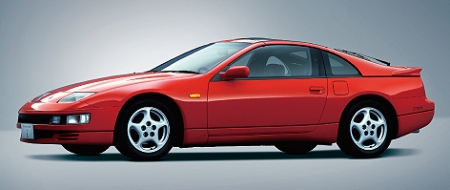 What the 300ZX fell short of Porsche 944, or to less extent
my favourite Renault Alpine A610, was its handling on mountain roads,
where road imperfections could hamper its dynamic stability. Pushed it
harder and hit a mid-corner bump could result in an unpredictable
slide. This meant it was not as confident inspiring to drive on
challenging roads than its rivals. Moreover, its extra size and weight
also made it less confident to thread into narrow mountain roads. Neither did its relatively lack
of steering feel help the matter. Higher cornering prowess it might
had, its driver was unlikely to exploit its performance to the full on
B-roads. No wonder while American magazines were fascinated with it,
British magazines rarely rated it at the top of the class.
Admittedly, the 300ZX's top priority was to please the USA market. It managed that soundly. Before the arrival of new Toyota Supra and Mazda RX-7 Mk3, it won nearly all the comparison tests conducted by American magazines. That should make it the most successful of all Z-cars, shouldn't it? Unfortunately, America's love affair with GTs cooled down during the 1990s following the recession and the rising popularity of SUVs. The rising cost of Japanese import and the burst of bubble economy at its home market also hit the Nissan hard. In addition to the stronger competition from Mitsubishi, Toyota and Mazda, the 300ZX could no longer enjoy the sales success of its predecessors. Eventually, Z32 sold the least number among the four generations. It was withdrawn from overseas market in 1996 and then disappeared from the domestic price list in 2000. Its successor 350Z would arrive 2 years late, but that was a very different car, and certainly lacked the beauty and sophistication of its predecessor. To many car enthusiasts, Z32 remains to be the ultimate Z-car. 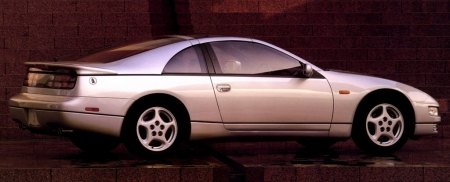 2+2 looked even better, thanks to a more balanced proportion. |